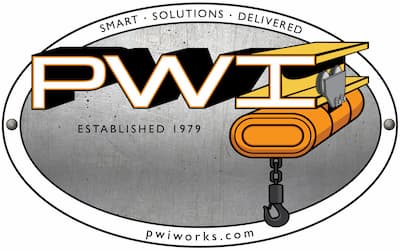Introduction
Knowing the difference between hoists and winches can be pretty important.
Putting a hoist on your truck instead of a winch might lead to a tough time getting out of a ditch.
Putting a winch on your crane instead of a hoist could lead to a dangerous situation whenever in use.
So to make sure you get the right equipment, it is best that we learn the difference between a winch and a hoist.
Difference Between Winches and Hoists
Winches and hoists not only look similar, at first glance they seem to function the same way.
Both pull heavy objects, whether that’s pulling a car or lifting one up.
The main difference between winches and hoists is how they pull what is attached to them.
Winches are meant to pull a heavy load horizontally. Pulling a car out of a ditch or pulling one up onto a trailer would be a perfect job for a winch.
Hoists are meant to lift a heavy load vertically. Pulling the engine out of a car or lowering something onto a truck bed are things you might use a hoist for.

More On Winches
Understanding the basic function of a winch is fine, but it can also be important to know the technical details.
Use Case
A winch is a device which is used to wind up a cable (or a wire rope), so when an object is attached to the wire rope there will be a pull on that object. This is typically done to support rolling loads at a slight incline.
In many cases the object which is attached to the wire rope will be something that is difficult to move, like a very big tree.
This means that the resulting pull by the winch will move the object that is attached to the winch, a car for instance.
This scenario can also be reversed.
The wire rope will be attached to the object that needs moving, typically a stuck vehicle.
The winch will be attached to the more immovable object, say the tow truck.
Winch Ratings
Winches are rated by what they can pull with only a bottom layer of rope around the winch drum.
Meaning that there is only enough rope to cover the drum of the winch one time.
What this means for you, is that the more rope there is on the winch, the less accurate their ratings become. The pull amount normally decreases by about 10 percent per layer of rope.
So when deciding on a winch it is good practice to overshoot the load you need to pull.
Some suggest that you should multiply the maximum weight you want to pull by one and a half times. So if you need to pull 1,000 pounds, you should buy a winch that is rated for 1500 pounds.
More on Hoists
Hoists are a little more varied than winches.
There are hoists which can lift a few hundred pounds and hoists which can lift many tons.
Use Case
Like a winch, a hoist is used to wind up a cable. Unlike a winch, a hoist pulls the cable straight up.
The hoist is designed to lift a load (dead weight) from a relatively level surface and keep it suspended in the air.
In order to keep the load suspended, hoists use a braking system and omit the free spool mechanism that you would find on a winch.

Hoist Ratings
Hoists are sometimes rated by their duty cycle. The ratings are as follows, H2 or light duty, H3 or moderate duty, and H4 or heavy duty.
These ratings determine the number of starts and stops a hoist can make during operation time.
This is an important thing to keep in mind. It not only depends on the weight of the load you need to lift using a hoist, but also how many lifts you need to make per hour.
This is obviously much more of a concern with hoists than winches because typically winches don’t need to be used hundreds of times per hour.
Hoist Types
There are also several different types of hoists available. Each hoist type is designed for lifting materials. The most common ones are: electric chain hoists, air chain hoists, and manual hoists such as lever chain and hand chain.
Conclusion
The most obvious difference between a winch and a hoist is their function. A standard winch is designed to pull loads horizontally, hoists lift heavy materials vertically.
Knowing how many times you need to use the hoist or winch per hour will also help you in determining what you need.
Most importantly it is important to remember that you should never use a winch as a hoist!
The lack of a locking brake system and its free spool would lead to a disaster if you were to try to lift something up with a winch rather than a hoist.
If you think a hoist could be the right fit for your application, our sales team is ready to help!
Contact us today by calling (574-646-2015) or submitting a request for quote on our website!


![New Construction vs Mezzanine [PDF]](https://pwiworks.com/wp-content/uploads/new-construction-vs-mezzanine-pdf-464x600.jpg)